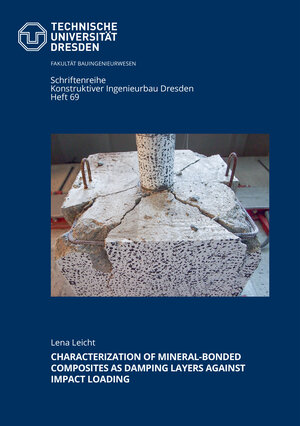
×
![Buchcover ISBN 9783867807722]()
Characterization of Mineral-Bonded Composites As Damping Layers Against Impact Loading
von Lena Leicht: The present work aims at finding suitable mineral-bonded strengthening layers to protect steel-reinforced concrete (RC) structures from impact events. The strengthening layers are applied to the impact-facing side and absorb large parts of the impact energy. In this way, they protect the RC structures from the impact events. The multilayered strengthening layers consist of a cover layer and a damping layer. The cover layers possess a high strength and a high modulus of elasticity. The impactor directly hits the cover layer, which spreads the impact force to larger areas of the damping layer below. The strengths and moduli of elasticity of the damping layers are minor, and they absorb impact energy, converting it into friction, heat, or potential energy. At first, the dynamic material properties were determined with the help of a tensile and a compressive split Hopkinson bar. The small-scale experiments serve to investigate the dynamic material behavior. At the same time, they are the basis for an eventual later numerical analysis of the strengthening layers. A numerical analysis enables the variation of the material parameters. Lastly, large-scale tests with RC cuboids that were fully supported were performed. A choice of cover and damping layer materials was compared to unstrengthened RC cuboids. The first set of experiments strived to vary the damping layer to find the most suitable one that absorbs the highest amount of incident energy, thus minimizing the damage to the RC cuboid. Afterward, the best damping layer material was combined with different cover layers to figure out the best cover layer option.


